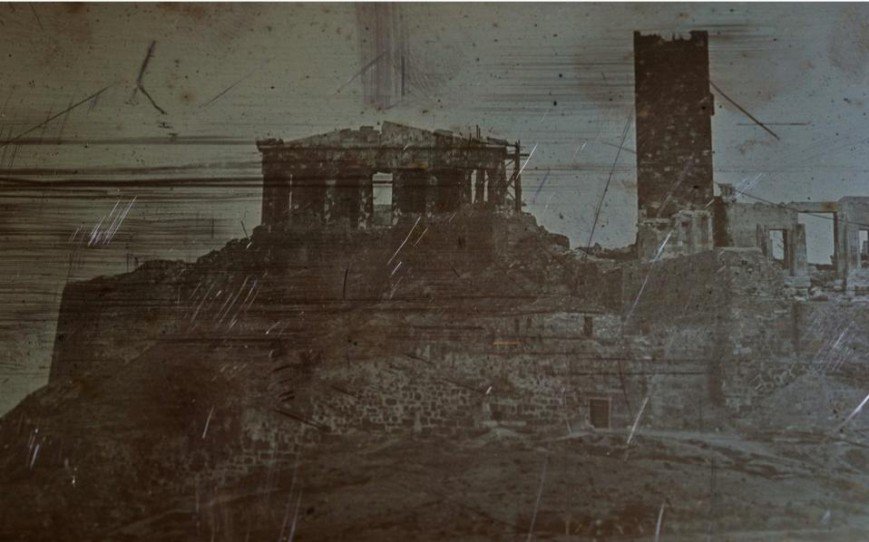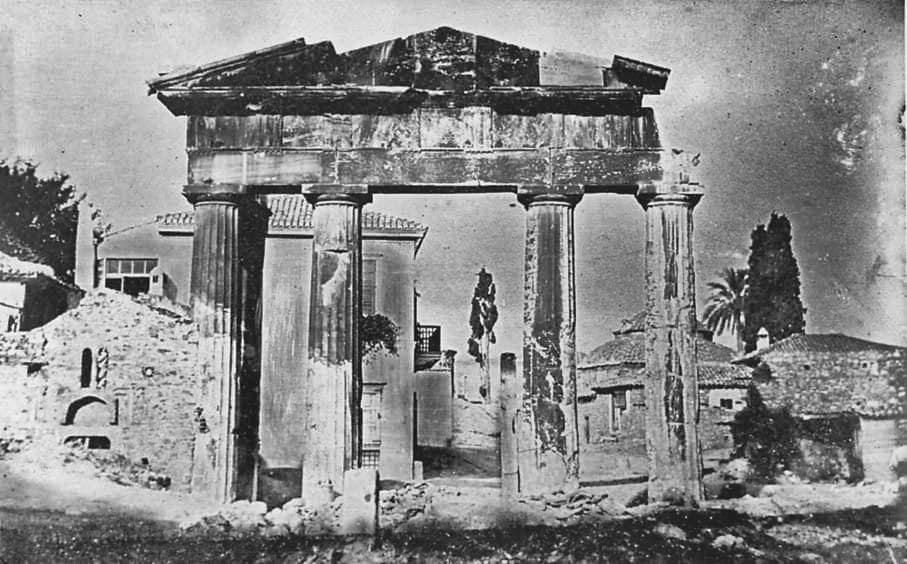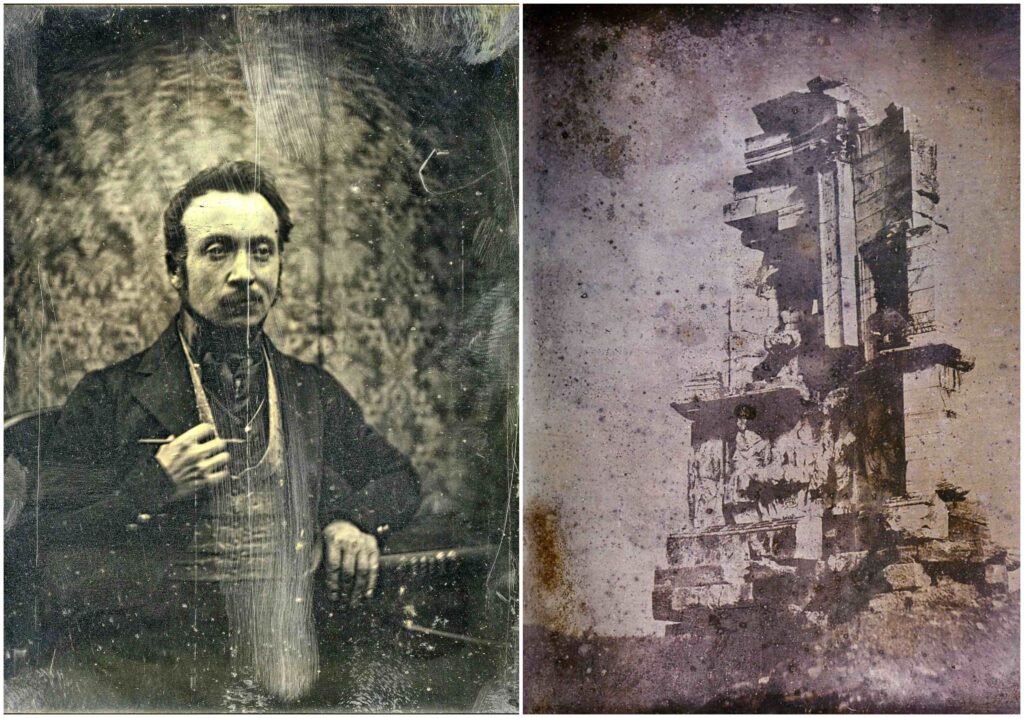Athens, 1842. The Acropolis stands over the city and inspires Joseph-Philibert Girault de Prangey (1804-1892), the man who took the oldest existing photograph of the monument. The photograph was taken on a morning from the Hill of the Nymphs.

The photograph that is considered the oldest existing photograph of the Acropolis, 1842, by Joseph-Philibert Girault de Prangey (1804-1892).
Athens and the Acropolis at the time of the photograph
Athens, which had been the capital of the Greek State since 1834 (a country with a population of 850.246 in 1840) was a small city at the time and had been almost entirely destroyed in the course of the Greek War of Independence (1821-1829), during which both the city and the Acropolis had suffered multiple sieges.
The city underwent serious damages, especially during the siege by Reşid Mehmed Pasha (also known as Kütahı), which lasted eleven months, from June 1826 to May 1827. After retaking the city in 1827, the Ottoman forces kept it until their withdrawal on 31 March 1831, when the Acropolis was officially handed back to the Greek State.
Regarding the Parthenon, it should be noted that a few years prior Girault de Prangey’s visit, Thomas Bruce (also known as Lord Elgin), British ambassador to Istanbul, had between 1801 and 1815 removed 12 pediment statues, 156 frieze plaques, 13 metopes, as well as the frieze of the Temple of Athena and one Caryatid of the Erechtheion (which was later replaced by a plaster copy).

Girault de Prangey’s “Grand Tour”
The history of the first photograph of the Acropolis starts early 1842, when 38 year-old artist and scholar Joseph-Philibert Girault de Prangey began his “grand tour” of Palestine, Egypt, Syria, Italy, Turkey and Greece, using a daguerreotype camera in his travels. Before this trip, he had already written two books on the Arab and Moorish monuments of Sicily and Spain. Horace Vernet, Frédéric Goupil-Fesquet and Gaspard-Pierre-Gustave Joly had undertaken similar travels before him, but none of their daguerreotypes were saved.
Girault de Prangey first arrived in Marseilles and Rome, and then travelled to Greece, Cairo, Alexandria, Istanbul, before reaching the archaeological sites of Asia Minor, “straying as far away as possible from the roads commonly used”. He continued his three-year long trek by visiting the Holy land, Baalbek, Damascus, and Aleppo.
His daguerreotypes are the oldest existing photographs of Greece, Palestine, Egypt, Syria and Turkey. Surprisingly, his work was discovered in the 1920s in a storage building of his estate and was made public only 80 years later.

The birth of the photograph and the rite of the “Grand Tour”
The birth of the photograph coincides with the rite of the “grand tour”, a type of voyage by Westerners in search of knowledge and exoticism, comprising travels to Italy, but also later to the so-called Orient. The “grand tour” (for a history of the term see Towner 1985) was an aesthetic experience that marked many generations of painters and scholars – British and French alike (Bustarret 1993).
19th century Orientalism was inextricably linked with photography in France: following the invention of the fixed image process by Niépce (1765-1833) and Daguerre (1787-1851), François Arago (1786-1853) would recommend at the outset the use of photography for the needs of Egyptology (Millet 2003).

Joseph-Philibert Girault de Prangey: an unsung pioneer of the daguerreotype
Joseph-Philibert Girault de Prangey (1804-1892), heir to a great fortune, dedicated his life to traveling, botany, drawing, architecture, and an invention that won his heart right away: photography. His 1842 shot of the Temple of Olympian Zeus in Athens, with a dark sky looming over its ruins, was considered bold by experts.

